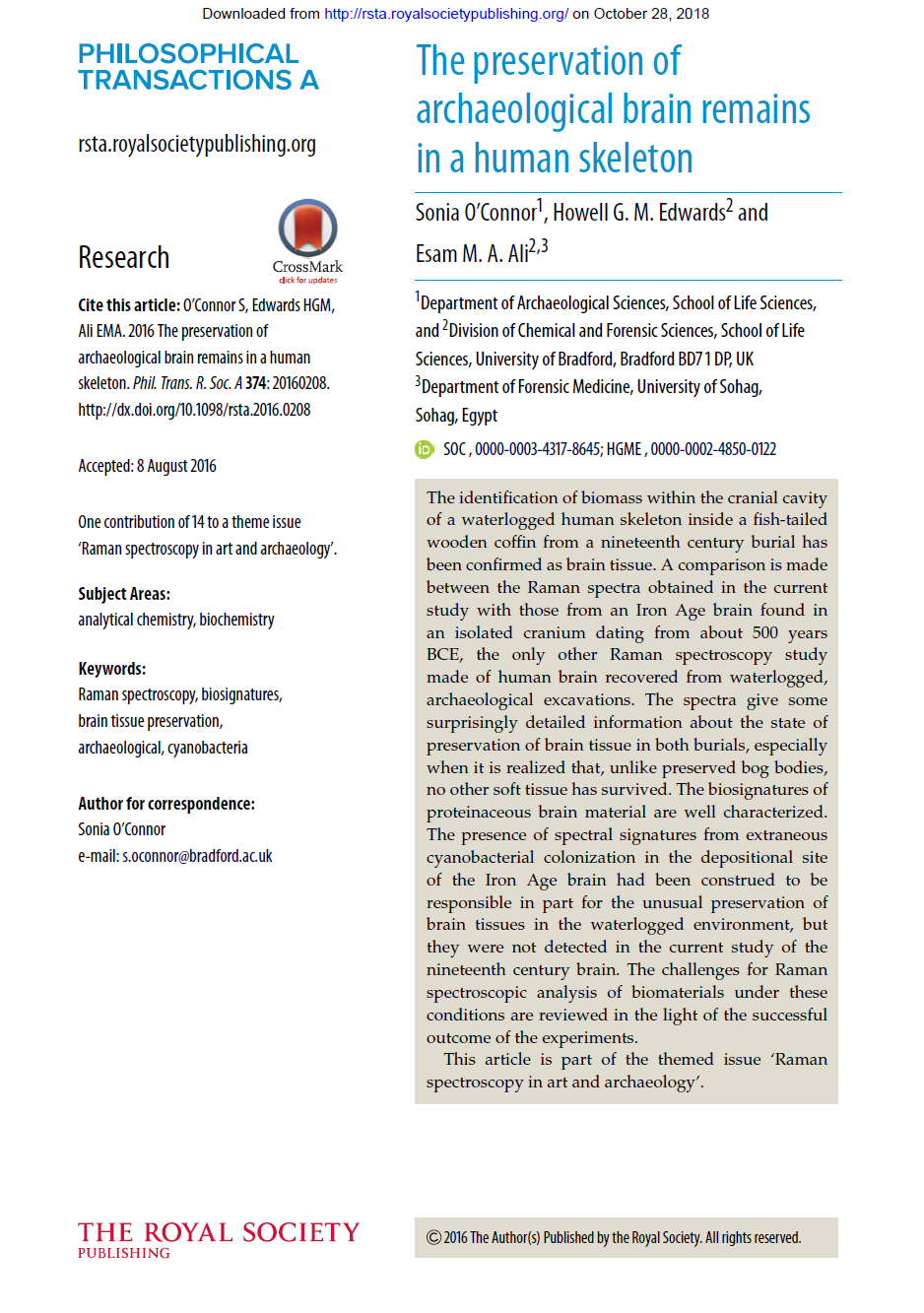The identification of biomass within the cranial cavity of a waterlogged human skeleton inside a fish-tailed wooden coffin from a nineteenth century burial has been confirmed as brain tissue. A comparison is made between the Raman spectra obtained in the current study with those from an Iron Age brain found in an isolated cranium dating from about 500 years BCE, the only other Raman spectroscopy study made of human brain recovered from waterlogged, archaeological excavations. The spectra give some surprisingly detailed information about the state of preservation of brain tissue in both burials, especially when it is realized that, unlike preserved bog bodies, no other soft tissue has survived. The biosignatures of proteinaceous brain material are well characterized. The presence of spectral signatures from extraneous cyanobacterial colonization in the depositional site of the Iron Age brain had been construed to be responsible in part for the unusual preservation of brain tissues in the waterlogged environment, but they were not detected in the current study of the nineteenth century brain. The challenges for Raman spectroscopic analysis of biomaterials under these conditions are reviewed in the light of the successful outcome of the experiments.This article is part of the themed issue 'Raman spectroscopy in art and archaeology'.


